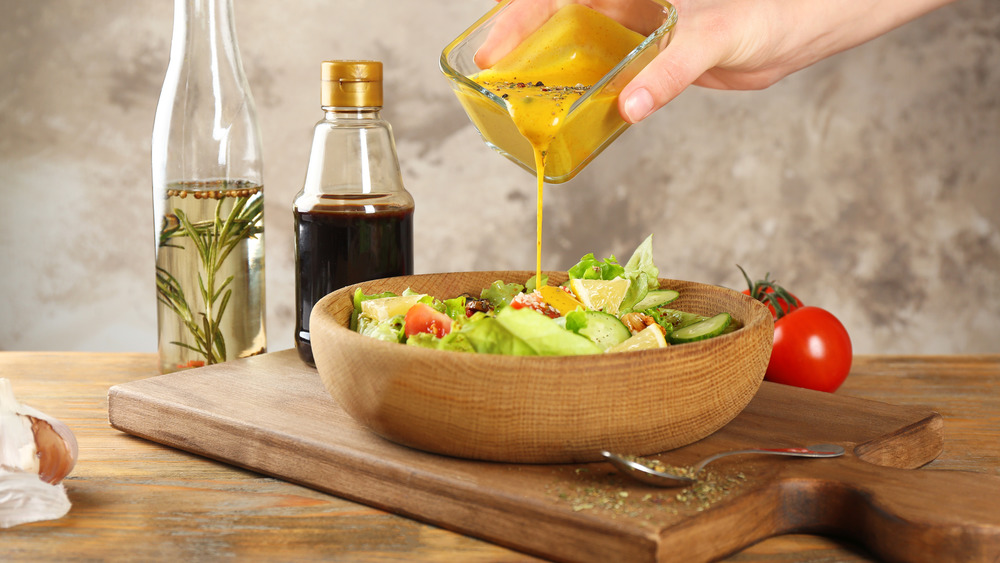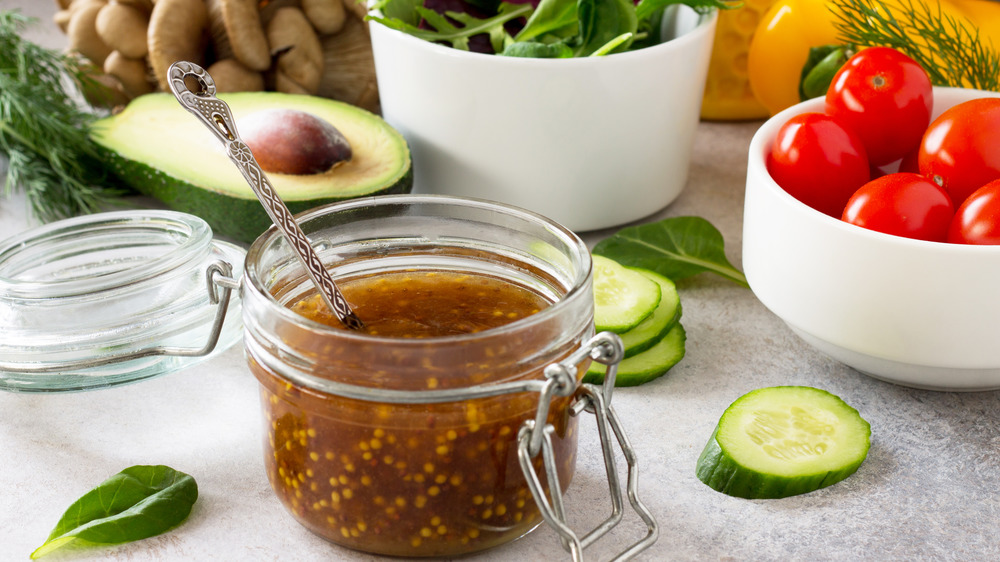This Is What Causes Bitter-Tasting Vinaigrette
The greens are vibrant, the vegetables are crisp, fresh and colorful, and your salad is studded with nuggets of nutrients from top to bottom. Sadly, one wrong move in the vinaigrette department and your medley is doomed.
In order to prevent ruining your masterpiece with a drizzle of dressing, let's first discuss the meaning of vinaigrette. Bon Appetit explains that all vinaigrettes begin with a combination of fat (oil) and acid (such as vinegar or lemon juice), and the ratio is typically one part acid to two or three parts oil. Kitchn notes that the ratio can be bumped up to four parts oil per part acid, and any tasty oil works, from pricy extra-virgin olive oil to a less expensive neutral-flavored oil.
While olive oil is a popular choice for a flavorsome vinaigrette, The Spruce Eats asserts that any vegetable oil or oil labeled "salad oil" is suitable, as are safflower, canola, soybean, and avocado oils. And Food & Wine suggests hazelnut, sesame, and walnut oils for unique vinaigrettes with nutty undertones.
A vinaigrette is only as good as the sum of its parts
Since we've established that a vinaigrette is basically a commingling of acid and oil, it's imperative that both ingredients are good quality. The flavor profile of salad oils, especially extra-virgin olive oil, can vary greatly; some oils are fruity and floral, while others are peppery and grassy (via We Olive). Those flavors will shine through in the dressing, so taste-test your oil before creating the vinaigrette to ensure it delivers the nuances you desire (via Bon Appetit).
When it comes to the acid, lemon juice is pretty predictable, but vinegar can really change the game. CD Kitchen explains that subpar vinegars can create bitter, harsh vinaigrettes. Adding too much vinegar (or lemon juice) can also muck up the acid-to-oil ratio, creating a dressing that's simply too strong for the greens. If this happens, add a pinch of baking soda to quell the bitterness (via Wonder How-To). Baking soda is alkaline and converts some of the vinegar to carbon dioxide, which balances out the acidity (via LEAF.tv). Add a pinch at a time until the flavor is corrected.
While an emulsifier isn't necessary for a classic vinaigrette, incorporating an ingredient that melds the acid and oil creates a thicker, creamier dressing (via Vegetarian Times). Dijon mustard is the obvious choice, but Foods Guy recommends alternatives, such as mayonnaise, honey, mashed avocado, miso, tahini, tomato paste, agave nectar, and maple syrup.

